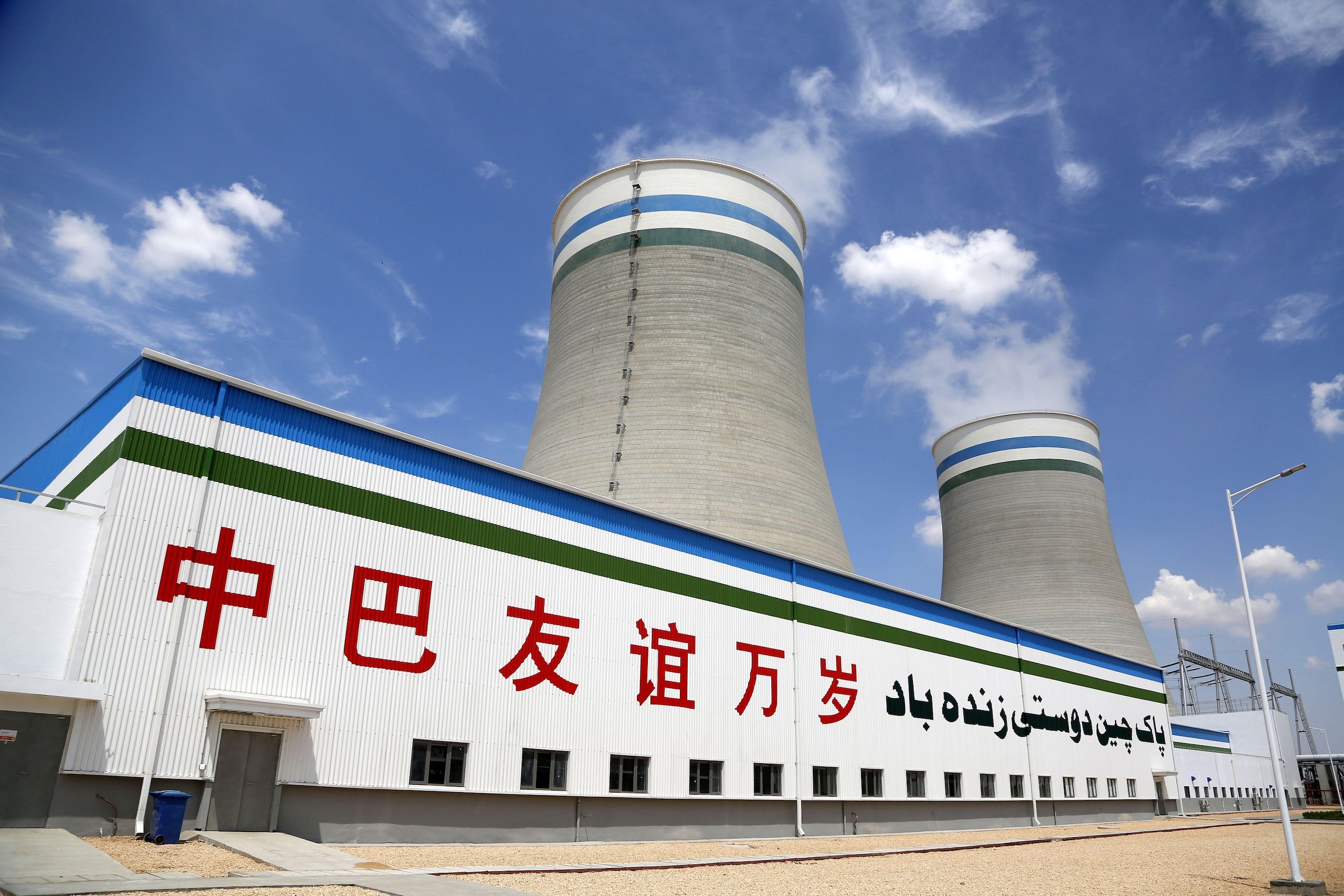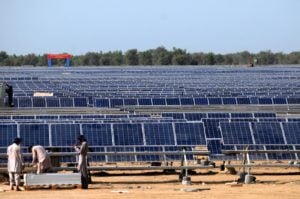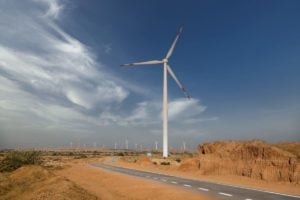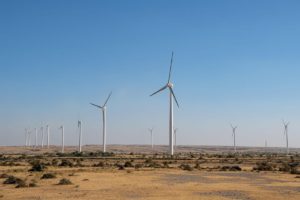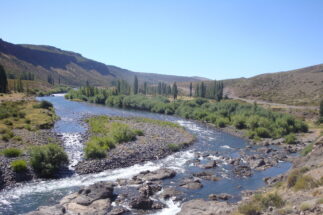News that the Pakistan government plans to secure financing and start construction on a long-stalled 300 megawatt coal-fired power plant in the port city of Gwadar has triggered a debate on the direction of the country’s energy sector. Set to be built and funded by Chinese state-owned entities, recent developments have also raised fresh questions about China’s pledge – made at the UN General Assembly in 2021 – not to build any new coal power plants overseas.
The Gwadar coal power plant was first conceived in 2016, with an estimated cost of USD 542.32 million. It is to be constructed by the Chinese company CIHC Pak Power, a subsidiary of the state-owned China Communications and Construction Group. The plant was recently reported to have secured financing from the Industrial and Commercial Bank of China (ICBC), China’s largest commercial bank. Once completed, it is intended to supply power, on a priority basis, to the industries being set up at the Gwadar Free Zone (GFZ), a special economic zone at Gwadar port that forms part of the China-Pakistan Economic Corridor (CPEC), the USD 62 billion bilateral infrastructure and connectivity project between China and Pakistan.
The environmental impacts of coal power – from local air and water pollution to carbon emissions – have made the project controversial.
“We are pushing the Chinese company to complete its financial closure by 31 December 2023, and start construction at the earliest so that it can be completed by 2025,” Shah Jahan Mirza, managing director of the Pakistan government-owned Private Power and Infrastructure Board told The Third Pole. “Electricity shortage is the biggest impediment to developing Gwadar,” he said.
Political instability, weak energy policies and a reliance on imported fossil fuels have meant that Pakistan has faced an energy crisis for decades. The majority of Balochistan province, where the Gwadar coal plant is set to be constructed, is currently without electricity.
In recent months, many other parts of the country have also faced prolonged power cuts, threatening industries and livelihoods. The energy shortfall has been exacerbated by the escalating prices of imported natural gas following Russia’s invasion of Ukraine, pushing the Pakistan government to search for new solutions to meet demand.
Pakistan’s energy sector is dominated by fossil fuels. According to the country’s Finance Division, as of April 2022, just under 60% of total installed generation capacity used fossil fuels, including gas, oil and coal. Just 3% of generated electricity in the 2022 fiscal year came from non-hydropower renewables. Pakistan’s Nationally Determined Contribution (NDC) – its climate pledge under the Paris Agreement – targets 60% renewable energy generation by 2030, including hydropower. The NDC also states: “From 2020, new coal power plants are subject to a moratorium.”
No new Chinese-backed coal power overseas?
In 2021, China’s president Xi Jinping announced that China would not build any new coal-fired power projects abroad. He also stated that the country would increase support for low-carbon energy in developing countries.
Bao Zhong, political counsellor at the Embassy of the People’s Republic of China in Islamabad, told The Third Pole that the Chinese government stands by the pledge. “The Gwadar coal-fired plant is not a new project and has been in the CPEC framework since 2016,” she said. “We hope the Gwadar power plant’s construction begins as early as possible to ease the power shortage there.”
Ahsan Iqbal, Pakistan’s federal minister for planning, development and special initiatives, seconded Bao’s comments. “This project was approved in 2017, long before the Chinese president’s proclamation.”
In April 2022, China’s National Development and Reform Commission (NDRC), the country’s top economic planning and management body, released an interpretation of the 2021 pledge, clarifying a moratorium on all “new build” projects. It also stated that projects already under construction should proceed “steadily and cautiously”. Some commentators suggested that the wording also left the door open to renegotiating contracts and pursuing alternatives to coal, such as gas, solar and wind power projects.
Azhar Lashari from the Policy Research Institute for Equitable Development (PRIED) believes that China’s continued support for the Gwadar coal power plant violates the April 2022 NDRC interpretation as “no civil works on the plant had started.”
The preparation for construction of the power plant is almost ready and it would be unfortunate if hurdles come in its wayBao Zhong, political counsellor at the Embassy of the People’s Republic of China in Islamabad
Speaking with The Third Pole, Lashari said the support is “not only a violation of [China’s] pledge to not build any overseas coal power plants, but it has undermined the battle against global warming and climate change”.
While construction of the Gwadar plant has not yet commenced, Bao of the Chinese Embassy in Islamabad said: “The preparation for construction of the power plant is almost ready and it would be unfortunate if hurdles come in its way.”
According to Mirza, the delay in starting construction was due to “problems in land acquisition and environmental approvals by the Balochistan government as well as lenders and Chinese state-funded insurance company Sinosure approvals”. Although the tariff (the rate at which the Chinese company will sell electricity) had been determined in 2019, the land acquisition for the plant did not happen until 2020 and the power purchase agreement between the Chinese company and GFZ was signed in early 2021.
The Pakistan government had attempted to persuade Chinese partners to shift the project to Thar, a district of Pakistan’s Sindh Province which is rich in lignite coal reserves, in order to use domestic coal and so save on precious foreign exchange. Block II of the Thar coal mine is a CPEC project.
“Shifting the plant to Thar would mean including this as a new coal project and China has taken a principled stand not to support new coal projects,” Bao told The Third Pole. She added that China was well aware of environmental issues around coal. “We have scrutinised the plant from every angle, including the environmental one, and tried to look at alternatives. Coal is the only feasible fuel. We want to help Pakistan develop Gwadar, and bring in investment; the only way to be able to attract investors is to give it sustainable power,” she said.
Solar versus coal in Gwadar
Questions have also been raised around how the Gwadar coal power plant fits into the Pakistan government’s long term energy policies. In 2020, Pakistan’s former prime minister Imran Khan announced to the world at the Climate Ambition Summit that Pakistan had “decided that we will not have any more power based on coal”, and that two power projects approved under CPEC that were to use imported coal – at Muzaffargarh and Rahim Yar Khan – had been scrapped. He also said that with regards to indigenous coal, Pakistan would focus on producing energy through coal liquefaction or gasification, “so that we do not have to burn coal to produce energy.”
Going back on that announcement [to replace coal with solar] was a negation of the pledge made by the previous government to not produce any more power from imported coalHaneea Isaad, IEEFA
Last year, it was reported that the Pakistan government was trying to persuade China to replace funding for the coal plant at Gwadar with investment in solar plants of equivalent capacity.
“It was a positive step,” said Haneea Isaad, energy finance analyst at think tank the Institute for Energy Economics and Financial Analysis (IEEFA). “Going back on that announcement was a negation of the pledge made by the previous government in 2020 to not produce any more power from imported coal,” she said.
Given the devastating impacts of climate change-related extreme weather events that Pakistan has experienced in recent years, Lashari of PRIED argued that both the Chinese and Pakistani governments should “reconsider” their decision to pursue construction of the coal power plant in Gwadar, and instead “replace it with an environmentally clean and green renewable energy project”.
Khalid Mansoor, former special assistant to the prime minister on CPEC affairs, disagrees. He said it may be “fashionable to discuss use of cleaner fuel sources”, but with the GFZ entering its second phase of expansion, this will require huge amounts of uninterrupted power. Mansoor argued that this can only be provided using gas, oil, or coal. “The 300 MW coal power plant will be a lifeline for Gwadar,” he asserted.
This was supported by minister Iqbal who said: “In our case, a stable baseload is only possible with coal, which is also the cheapest option.”
“Solar power can be used for homes and other smaller ventures and as a complement to the coal plant; it cannot provide undisturbed electricity to big industries,” agreed Mirza.
The cost of importing coal
Shah Jahan Mirza of Pakistan’s Private Power and Infrastructure Board confirmed to The Third Pole that the Gwadar power plant is to use high-quality imported coal, not the lignite coal produced in the Tharparkar coal mines of Pakistan’s Sindh province.
“Had we used Thar coal at the Gwadar power plant, not only would it have reduced the power tariff for customers, it would have reduced our import bill,” said Mansoor. “But without a railway line, it was logistically not possible to transport lignite Thar coal, right now.”
“The coal project at Gwadar was conceived several years back when coal was cheap and there were other projects on imported coal being set up in the country,” said Vagar Zakaria, an energy expert with environmental consulting firm Hagler Bailley Pakistan. “The economics don’t work out now with coal prices so much higher,” he added.
Zakaria was perplexed as to why China would want to build a coal-fired power plant to sell power to Pakistan when the latter “cannot pay back with current shortage of forex and debts accumulated in the power sector.” He said: “If I were China, I would be cautious about blocking capital in Gwadar.”
IEEFA’s Isaad worries that expanding coal imports will “exacerbate the economic hardships we’re facing today”, coming at a time when Pakistan is dealing with a severe foreign exchange crisis. Ultimately, she said, “power planning needs to be dissociated from the political whims of the ruling party.”
